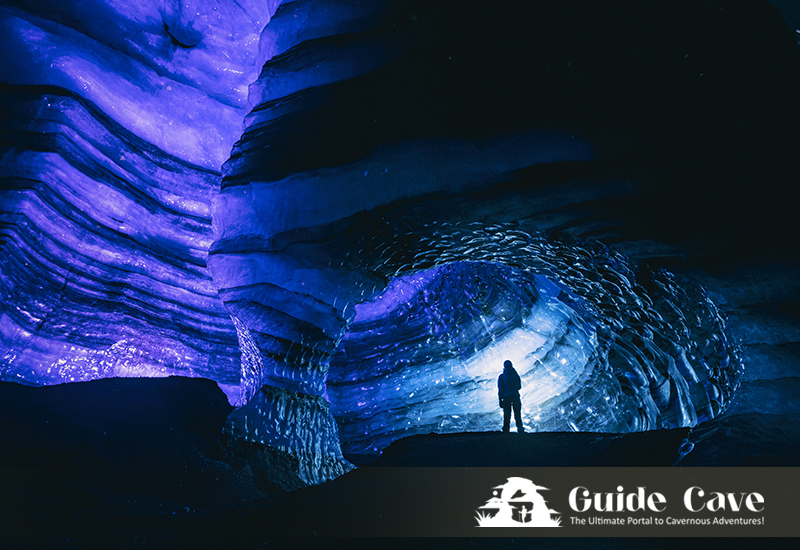Introduction to Cave Acoustics
Imagine stepping into a deep, dark cave, and the moment you speak, your voice bounces back in a haunting echo. Caves create some of the most unique soundscapes on Earth, with natural acoustics that have fascinated humans for thousands of years. Unlike open environments where sound dissipates quickly, caves trap, amplify, and distort sound waves in ways that can be both beautiful and eerie.
Cave acoustics is a field of study that explores how sound travels underground, how natural and biological elements contribute to these soundscapes, and how ancient and modern humans have used caves for communication, rituals, and even music. Scientists are uncovering the mysteries of underground acoustics, using technology to map hidden chambers and even protect fragile cave ecosystems.
The Science of Sound in Caves
Sound behaves very differently in caves than in open spaces. When you shout in a valley, your voice might echo once or twice before fading. In a cave, however, that same shout can create a long-lasting, distorted, or even musical reverberation.
Several factors affect how sound travels in caves:
1. Temperature and Humidity
- Sound waves move differently through warm and cool air layers, sometimes creating unexpected sound effects.
- Moist cave air can make sound waves travel slower or alter their pitch.
2. Rock Density and Surface Texture
- Smooth limestone walls reflect sound clearly, creating sharp echoes.
- Jagged or porous rock surfaces scatter sound, muffling echoes or producing strange reverberations.
3. Cave Shape and Chamber Size
- Large, open chambers create long echoes and deep reverberations.
- Narrow tunnels cause sound to bounce back quickly, creating eerie whispers or amplifications.
Understanding these factors helps scientists predict how sound will behave in different cave environments, which has practical applications for cave mapping and even studying the ancient use of sound in cave paintings and rituals.
The Physics Behind Cave Echoes and Reverberations
One of the most intriguing aspects of cave acoustics is the interplay between echoes and reverberation.
- An echo is a distinct repetition of a sound caused by its reflection off a surface.
- Reverberation is a continuous, blending sound effect caused by multiple reflections occurring in quick succession.
How Cave Shape Affects Echoes
- Long tunnels create quick, sharp echoes.
- Dome-shaped chambers produce rich, prolonged reverberations.
- Interconnected passageways distort echoes, creating an illusion of whispers or murmurs.
Some caves are so acoustically unique that they naturally amplify certain frequencies, making sounds appear musical or ghostly.
Natural Sounds Found in Caves
Caves are alive with sound, even in the absence of human activity. Natural underground noises include:
Geological Sounds
- Water dripping from stalactites – creates rhythmic sounds that can resemble drumming.
- Wind whistling through tunnels – produces haunting, flute-like tones.
- Rock shifting – emits deep rumbling noises, sometimes mistaken for growls or mysterious “cave monsters.”
Biological Sounds
- Bats using echolocation – rapid clicking sounds as they navigate in the dark.
- Insects buzzing or rustling – some cave crickets and beetles create distinct noises.
- Amphibians and reptiles – certain species of frogs and salamanders communicate with low croaks or hisses.
These natural elements create a dynamic sound environment that has shaped cave ecosystems and influenced human use of caves for centuries.

Human Interaction with Cave Acoustics
Throughout history, humans have been drawn to caves not only for shelter but also for their unique sound properties. Some of the earliest evidence of human interaction with cave acoustics comes from prehistoric cave paintings, where researchers have found that many artworks were placed in areas with the most pronounced echoes. This suggests that ancient people may have used caves for rituals, storytelling, or even music.
1. Caves as Ritual and Musical Spaces
Many ancient cultures recognized the power of sound in caves:
- Prehistoric Drumming and Chanting: Early humans might have used percussion instruments or chanting to amplify sounds within caves, creating an immersive auditory experience.
- Rock Gongs: Some cave formations naturally produce musical tones when struck, leading some researchers to believe ancient people may have used them as instruments.
- Echo as a Spiritual Sign: Some cultures believed echoes were the voices of spirits or deities, influencing their use of caves for religious ceremonies.
2. Modern Uses of Cave Acoustics
Today, caves are used for various acoustic purposes:
- Musical Performances: Some caves, like the Luray Caverns in Virginia and the Jeita Grotto in Lebanon, are famous for their natural amplification and host concerts.
- Meditation and Sound Healing: Certain caves are believed to have calming sound properties, attracting those interested in sound therapy.
- Scientific Research: Modern studies on cave acoustics help us understand ancient human behavior, the movement of sound in enclosed spaces, and even assist in cave conservation efforts.
How Scientists Study Cave Acoustics
To study the complex soundscapes of caves, scientists use specialized technology to record, analyze, and map underground sound environments.
1. Tools for Studying Cave Sounds
- Hydrophones: Used to capture underwater cave sounds, such as dripping water or subterranean rivers.
- Seismic Sensors: Detect vibrations and shifts in the cave structure that could affect acoustics.
- High-Sensitivity Microphones: Capture subtle echoes, animal sounds, and air movements in caves.
- Sonar and LIDAR Scanning: Used to map caves by measuring how sound waves reflect off walls.
2. Notable Studies and Discoveries
- Researchers in France have discovered that some prehistoric cave art is located in areas with strong echoes, suggesting that early humans chose painting locations based on sound properties.
- Scientists have used sound mapping in the Mammoth Cave system in Kentucky to explore unknown passages.
- Studies on bat echolocation in caves have improved our understanding of how animals use sound for navigation in complete darkness.
Bats and Echolocation: The Role of Acoustics in Navigation
Bats are the ultimate experts in cave acoustics, using echolocation to navigate through pitch-black tunnels. By emitting high-frequency sound waves and analyzing the returning echoes, bats can determine the size, shape, and distance of objects around them.
1. How Echolocation Works
- A bat emits a series of high-pitched clicks.
- These clicks bounce off surfaces and return as echoes.
- The bat processes the returning sound waves to map its surroundings.
2. The Science of Bat Sounds
Bats use different echolocation techniques depending on their environment:
- Narrowband calls: Used in open spaces, with long, steady-frequency sounds.
- Broadband calls: Used in cluttered spaces like caves, with short bursts of sound to detect objects at close range.
3. How Studying Bats Helps Science
By analyzing bat echolocation, scientists have:
- Developed sonar and radar systems for human navigation.
- Created AI models to process complex acoustic data.
- Improved conservation efforts by identifying bat populations based on their unique echolocation calls.
Unexplained and Mysterious Cave Sounds
For centuries, caves have been associated with eerie and unexplained noises, leading to legends of haunted caves and underground spirits. While many of these sounds have scientific explanations, some remain a mystery.
1. Common Reports of Strange Cave Sounds
- Whispering voices: Caused by sound waves bouncing through tunnels and distorting.
- Deep rumbling noises: Often due to shifting rocks, underground water movement, or air pressure changes.
- Humming or musical tones: Can be produced by wind passing through narrow cave openings.
2. Famous Caves with Unusual Sound Phenomena
- The “Singing Cave” in Iceland: Known for producing eerie humming sounds due to air currents.
- The Devil’s Cave in Germany: Famous for deep growling noises that have been linked to underground water flow.
- The Tayos Cave in Ecuador: Where explorers have reported unexplained echoes and “voices.”
Scientists continue to study these sounds, often discovering fascinating natural explanations, but the mystery remains part of what makes caves so intriguing.

Acoustic Mapping: Using Sound to Explore Caves
In modern cave exploration, sound plays a crucial role in mapping and discovering hidden chambers.
1. How Sound Helps Map Caves
- Sonar Imaging: Sends out sound waves and measures their reflections to create 3D models of caves.
- Echolocation Devices: Used by explorers to detect openings in rock walls.
- Seismic Sound Waves: Help scientists locate underground voids without physical entry.
2. Examples of Caves Mapped Using Sound
- The Mammoth Cave system in the U.S. has been extensively studied using sonar technology.
- Underground caves in Mexico have been explored with hydrophones to understand how water influences cave formations.
- NASA is researching sound-based mapping techniques for future exploration of caves on Mars.
The Impact of Noise Pollution on Cave Ecosystems
As human activities increase near caves, artificial noise is disrupting natural underground ecosystems.
1. Effects of Noise Pollution on Cave Wildlife
- Bats are highly sensitive to sound disturbances, which can cause them to abandon their roosts.
- Insects and amphibians rely on sound cues for communication and survival, which can be masked by human-generated noise.
- Increased vibrations from tourism and construction can alter the natural acoustics of caves, affecting their ecosystems.
2. Conservation Efforts
- Some caves have restricted access to reduce noise impact.
- Researchers are developing “silent zones” in caves to protect wildlife.
- Awareness campaigns promote responsible cave tourism to preserve these unique environments.
The Future of Cave Acoustics Research
The study of cave acoustics is advancing with technology, offering exciting possibilities for future discoveries.
1. AI and Machine Learning in Cave Acoustics
- AI is being used to analyze cave sounds and identify unknown patterns.
- Machine learning helps distinguish between natural and artificial noises in caves.
2. Exploring Caves on Other Planets
- Scientists are developing acoustic tools to study potential cave systems on Mars and the Moon.
- Sound-based exploration could help future astronauts navigate underground tunnels on alien worlds.
3. The Role of Acoustics in Archaeology
- Sound analysis is being used to study ancient human activity in caves.
- Future research may reveal how prehistoric people used cave acoustics for communication and rituals.

Conclusion
Caves are more than just dark, enclosed spaces—they are dynamic acoustic environments filled with fascinating sound phenomena. From the echoes and reverberations shaped by geological formations to the eerie whispers and deep rumbles that inspire myths, cave acoustics remains an exciting field of study.
As scientists continue to explore underground soundscapes, new discoveries in fields ranging from biology to archaeology to planetary exploration are emerging. By understanding and preserving cave acoustics, we can protect these unique environments for future generations.
FAQs
1. Why do caves create such unique sound effects?
Caves trap and reflect sound waves due to their enclosed nature, causing echoes, reverberations, and distortions.
2. How do scientists record and analyze cave sounds?
They use hydrophones, seismic sensors, and high-sensitivity microphones to capture and study underground sound behavior.
3. Can sound waves help discover new caves?
Yes, sonar and seismic sound waves can reveal hidden chambers and map unknown cave networks.
4. What are some famous caves known for their acoustics?
The Jeita Grotto, Luray Caverns, and the “Singing Cave” in Iceland are known for their unique acoustic properties.
5. How does noise pollution affect cave ecosystems?
Human-generated noise disrupts wildlife, particularly bats and insects, and can alter the natural acoustic environment.

